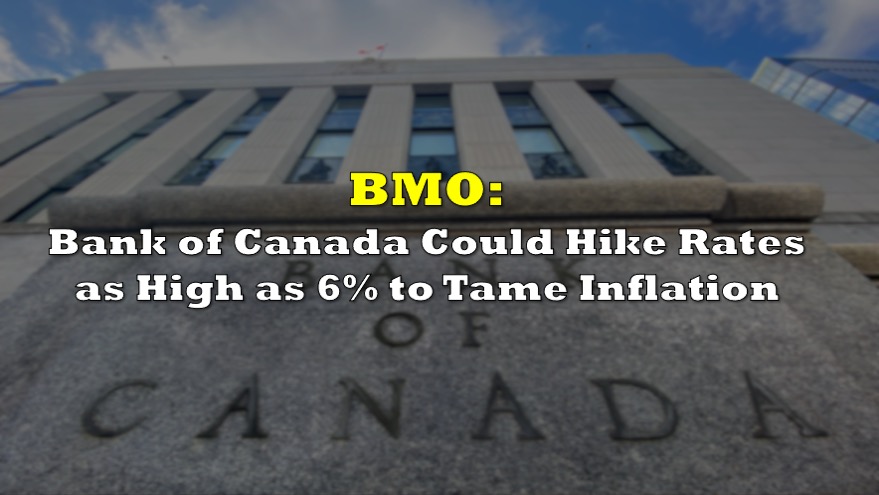Bank of Montreal’s (TSX: BMO) latest financial results for the fourth quarter and fiscal 2024 revealed a mixed performance, characterized by significant revenue growth and robust capital ratios but weighed down by escalating credit loss provisions and weak segmental earnings in key areas.
The bank reported a Q4 net income of $2.304 billion, a substantial 35% increase from $1.710 billion in the same quarter of the prior year. However, on an adjusted basis, net income declined to $1.542 billion, a 31% drop compared to $2.243 billion in Q4 2023. Compared to the prior quarter, reported net income rose 24% from $1.865 billion, while adjusted net income fell 22% from $1.981 billion.
Reported EPS surged to $2.94, a 34% year-over-year improvement from $2.19 and a sequential rise from $2.48 in Q3. Yet, adjusted EPS of $1.90 was down sharply from $2.93 in Q4 2023 and $2.64 in Q3, driven by higher credit provisions and flat adjusted revenue. This juxtaposition between reported and adjusted results reflects the impact of a significant one-time reversal of a fiscal 2022 legal provision totaling $870 million.
Revenue for the quarter grew by 8% year-over-year to $8.957 billion, compared to $8.319 billion in Q4 2023, while adjusted revenue was flat at $8.368 billion, down marginally from $8.333 billion in the prior year and up 2% from $8.206 billion in Q3.
While net interest income rose 10% year-over-year to $5.438 billion, primarily due to the reversal of accrued interest tied to the legal provision, adjusted net interest income decreased by 2% to $4.849 billion. Non-interest revenue increased by 4% to $3.519 billion, driven by stronger trading revenue and client asset growth, but these gains were offset by a decline in lending fees and insurance-related revenue.
Provisions for credit losses (PCL) soared to $1.523 billion in Q4, more than tripling the $446 million recorded in the same quarter of 2023 and marking a 68% increase from $906 million in Q3. This surge was driven by higher provisions for impaired loans, which reached $1.107 billion, compared to $408 million in Q3 and $408 million in Q4 2023. The provision for performing loans also jumped to $416 million from $78 million in the prior quarter, reflecting cautious portfolio management in light of economic uncertainty. Total PCL as a percentage of average net loans rose to 91 basis points, a sharp increase from 27 basis points a year ago and 54 basis points last quarter.
On a per segment basis, Canadian Personal and Commercial Banking reported a 5% revenue increase year-over-year, supported by a 6% rise in average loans and a 10% growth in deposits. However, adjusted net income fell 17% to $765 million due to rising provisions for credit losses and higher expenses.
The U.S. P&C segment fared worse, with adjusted net income plunging 51% to $326 million from $670 million a year earlier and $539 million in Q3. Weakness in commercial banking, narrowing net interest margins, and elevated credit provisions weighed heavily on results, particularly in the U.S. corporate lending portfolio.
BMO Wealth Management reported a 7% decline in adjusted net income to $328 million, with insurance-related revenue under pressure due to IFRS 17 adjustments. Although Wealth and Asset Management saw a 35% increase in net income, this was not enough to offset broader segmental challenges. BMO Capital Markets also struggled, with adjusted net income falling 43% to $270 million as revenue from Investment and Corporate Banking declined amid higher expenses and credit costs.
Non-interest expenses decreased by 22% to $4.427 billion on a reported basis, largely due to the reversal of the legal provision and reduced acquisition and integration costs. However, adjusted expenses increased by 4% sequentially to $4.876 billion, reflecting higher professional fees and regulatory costs. Despite efforts to improve operational efficiencies, the bank’s adjusted efficiency ratio increased to 58.3% from 57.3% in Q3, indicating higher relative costs to generate revenue.
The Common Equity Tier 1 ratio improved to 13.6%, up from 12.5% a year ago and 13.0% in Q3, supported by the legal provision reversal and lower risk-weighted assets.
Fiscal 2024 results mirrored the quarterly trends. Reported net income rose to $7.327 billion from $4.437 billion in fiscal 2023, while adjusted net income fell to $7.449 billion from $8.735 billion. Revenue grew 12% to $32.795 billion, though adjusted revenue increased by a modest 3% to $32.412 billion. Rising provisions for credit losses, which more than doubled to $3.761 billion from $1.473 billion last year, and flat adjusted net interest margins at 1.85% for the year weighed heavily on profitability. Return on equity improved to 9.7% from 6.2% on a reported basis, but adjusted ROE declined to 9.8% from 12.6%, underlining the disparity between headline and underlying performance.
The bank announced raising its quarterly dividend by 5% year-over-year to $1.59 per share and issuing a normal course issuer bid to repurchase up to 20 million shares.
BMO last traded at $134.15 on the TSX.
Information for this briefing was found via Sedar and the sources mentioned. The author has no securities or affiliations related to this organization. Not a recommendation to buy or sell. Always do additional research and consult a professional before purchasing a security. The author holds no licenses.









